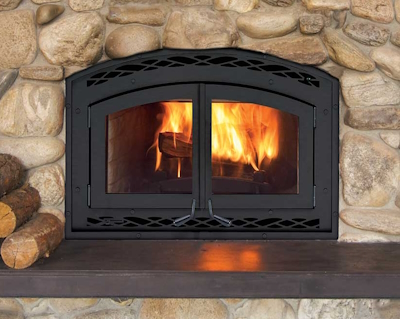Many tips make your life as a fireplace owner easier; one powerful one is learning how to light your fire safely and efficiently. Struggling to ignite crumpled-up newspaper or kindling while fighting billowing smoke can make lighting a fire feel more like a chore than fun, especially if you light a fire daily. Knowing some tricks of the trade makes the process easier.
In this article, we lay out the easiest ways to light a fire. We cover both traditional fireplaces and wood-stove fireplaces. Some of the steps you may already know, but others you may not. By adopting them, you will speed up the lighting process while improving the quality of your fire.
Before You Light: Things to Keep in Mind
Here are some tips worth keeping in mind before lighting your fire:
Avoid Using Certain Fire Starters
The EPA recommends using newspaper, kindling, and organic or all-natural fire starters. Avoid using gasoline, kerosene, or charcoal because they spread fires too easily and produce excessive amounts of creosote and soot that block airflow, leading to dangerous interior fires.
Keep Flammable Items Away from the Fire
Any furniture, drapery, clothing, books, and other flammable materials could ignite and cause a fire inside the room. Maintain a 36" clearance to combustibles.
Check Your Fireplace or Stovepipe
Before you light a fire, check the chimney or stovepipe for any damage or blockages. If any are spotted, they may create smoke build-up in your home and lead to dangerous levels of carbon monoxide or a potential chimney fire.
Make Sure the Damper is Open
Opening the damper before you light your fire ensures that the fire gets plenty of oxygen and draft for easier lighting and ensures that the smoke leaves your home correctly. Check for both stove pipe dampers and dampers built into the stove such as by-pass dampers.
Choose the Right Wood
The type of firewood you use significantly affects how easily and quickly your fire burns. Hardwoods like oak, hickory, and maple provide long-lasting, hot fires. Softwoods like pine and cedar burn quickly, shortening the life of your fire, but are great for starting fires.
Additionally, choose dry woods over wet woods. Dry woods burn hotter and produce less smoke and creosote as well as requiring less heat to ignite.
Items You Will Need
- Extra-long matches
- Newspaper or pine needles
- Kindling wood fire starter
Strategies for Stacking Your Wood
Stacking your wood ensures your fire gets enough oxygen as it lights and burns. Here are a few strategies for stacking your wood.
Note: Avoid overloading the firebox with wood. Large flames can be a fire hazard. Additionally, too much wood can deprive fires of oxygen.
The Log Cabin Method
Arrange a few logs parallel to each other and about 6 inches apart. Add kindlings in the center between the log spaces. Then stack a second layer of logs, placing them perpendicular to the first layer.
Log Cabin Method Version 2
This strategy is similar to the one above. Lay kindling in the middle of the firebox and place two pieces of wood parallel to each other with the tips of the logs touching the side of the firebox. Add a second layer of logs perpendicularly so that the logs touch the rear of the firebox. Then light the kindling.
The Top-Down Method (aka the "Upside-Down Fire")
Group the wood into small, medium, and large sizes. Place the large logs on the grate and lay the medium logs on top of the large logs perpendicularly. Then add a layer of small logs perpendicular to the prior level.
Once the logs are stacked, place the kindling on top of the wood instead of underneath it. In this scenario, you will light the fire from the top. Burned embers from the top will fall onto larger logs below, igniting them. This log placement strategy produces less smoke and heats the flue faster for more draw and improved combustion.
Lighting Your Fireplace
Once the wood is stacked and your fireplace is prepped with kindling, it's time to light that fire! Here are steps for lighting both wood stove fireplaces and traditional wood-burning fireplaces.
1. Keep extra kindling nearby in a range of sizes. You will need to feed it into the fire to help it grow.
2. Light the kindling. As it burns, add more kindling to ensure the larger logs light. Start with smaller pieces of kindling and gradually increase in size as the fire grows.
4. Once the larger logs are lit, adjust the vent/damper settings to control the rate at which your fire burns.
5. For traditional wood-burning fireplaces, you can use glass doors to contain the heat and move smoke up the chimney more easily.
6. For wood stoves, close the glass door to create a safer fire and build up the heat.
Conclusion
These handy tips will help you build your fire quickly and safely while maximizing warmth for a more comfortable home. You will especially appreciate these tips if you light your fire daily. Once you follow these steps a few times, they will be second nature.


/1003/site-assets/logo.png)


